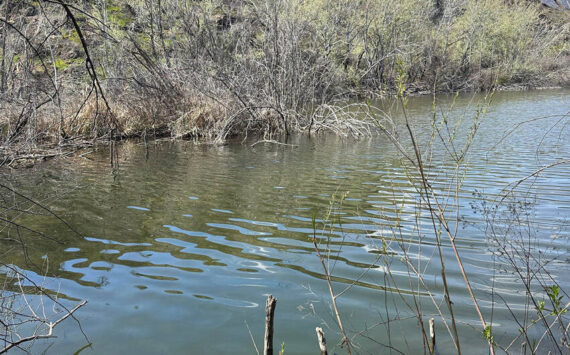Emergency Management provides winter safety tips
OKANOGAN – With temperatures dropping well below freezing, there is a lot of local advise out there to help people stay safe throughout the winter season.
Scott Miller, manager of the county’s Department of Emergency Management, said the county Sheriff’s Office has several tips on their website for staying safe on the road, as well as avoiding falling through ice, which may appear solid, but can be dangerous.
If your travel needs call for driving in wintry weather the county recommends you prepare your car for the trip by updating your vehicle emergency kit with:
- Booster cables;
- Blankets, hats, socks, and mittens;
- Road salt or sand; and
- A fluorescent distress flag.
While on the road, follow these driving techniques to ensure you reach your destination safely:
- Decrease your speed and leave plenty of room to stop;
- Break gently to avoid skidding;
- Do not use cruise control or overdrive on icy roads; and
- Turn on your lights to increase your visibility to others.
According to the county’s website there is no such thing as 100 percent safe ice. Before venturing out on a frozen lake or pond keep in mind:
Even if ice is a foot thick in one area on a lake, it can be one inch thick just a few yards away. It’s impossible to judge the strength of ice by its appearance, thickness, daily temperature, or snow cover alone. Ice strength is actually dependent on all four factors, plus water depth under the ice, the size of the water and water chemistry, currents, and distribution of the load on the ice.
Here are a few general guidelines:
Wait to walk out on the ice until there are at least four inches of clear, solid ice. Thinner ice will support one person, but since ice thickness can vary considerably, especially at the beginning and end of the season, four inches will provide a margin of safety. Some factors that can change ice thickness include flocks of waterfowl and schools of fish. By congregating in a small area, fish can cause warmer water from the bottom towards the surface, weakening or in some cases opening large holes in the ice.
Go out with a buddy and keep a good distance apart as you walk out. If one of you goes in the other can call for help (it’s amazing how many people carry cellular phones these days). The companion can also attempt a rescue if one of you are carrying rope or other survival gear.
Snowmobiles and ATV’s need at least five inches, and cars and light trucks need at least 8-12 inches of good clear ice.
Contact a local resort or bait shop for information about known thin ice areas.
Wear a life jacket. Life vests or float coats provide excellent flotation and protection from hypothermia (loss of body temperature). Never wear a life jacket if you are traveling in an enclosed vehicle, however. It could hamper escape in case of a breakthrough.
Carry a pair of homemade ice picks or even a pair of screwdrivers tied together with a few yards of strong cord that can be used to pull yourself up and onto the ice if you do fall in. Be sure they have wooden handles so if you drop them in the struggle to get out of the water, they won’t go straight to the bottom!
Avoid driving on the ice whenever possible. Traveling in a vehicle, especially early or late in the season is simply “an accident waiting to happen.”
What if a companion falls through thin ice?
- Keep calm and think out a solution.
- Don’t run up to the hole. You’ll probably break through and then there will be two victims.
- Use some item on shore to throw or extend to the victim to pull them out of the water such as jumper cables or skis, or push a boat ahead of you.
- If you can’t rescue the victim immediately, call 911. It’s amazing how many people carry cell phones.
- Get medical assistance for the victim. People who are subjected to cold water immersion but seem fine after being rescued can suffer a potentially fatal condition called “after drop” that may occur when cold blood that is pooled in the body’s extremities starts to circulate again as the victim starts to re-warm.
What if you fall in?
Try not to panic. Instead, remain calm and turn toward the direction you came from. Place your hands and arms on the unbroken surface of the ice (here’s where the ice picks come in handy.) Work forward on the ice by kicking your feet. If the ice breaks, maintain your position and slide forward again. Once you are lying on the ice, don’t stand. Instead, roll away from the hole. That spreads out your weight until you are on solid ice. This sounds much easier than it really is to do.
The best advice is don’t put yourself into needless danger by venturing out too soon or too late in the season. Try to not go out alone and always have a plan if something does go wrong.
For a full list of list of tips concerning walking or driving on ice, see the county’s website at http://okanogandem.org/. They’v also got tips on how to keep your pet safe during the winter months.





